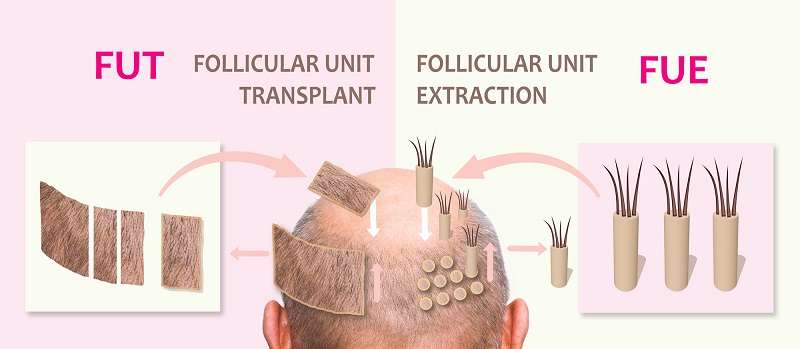A receding hairline or bald spot isn’t just a cosmetic concern for men; it can also bring a heavy blow to their self-esteem.
Male pattern baldness is common and often due to genetics. About one in four men start seeing their hair thin out before they’re 21. As men get older, this number increases. The American Hair Loss Association says that 95% of hair loss in men comes from androgenetic alopecia. This is a condition you can inherit, and it usually leads to a receding hairline and thin hair on top of the head. It happens because of a sensitivity to DHT, a substance that comes from testosterone.
Fortunately, modern medical science offers effective solutions, with various hair transplant techniques that can turn ‘bald’ into ‘bold.’ Today, you’ll discover five methods to regain your hair and confidence.
1. Hair systems
Hair systems for men, also known as hairpieces or toupees, are a non-surgical alternative for hair restoration. These are made from real or synthetic hair attached to a base that adheres to your scalp.
These can give you an immediate full head of hair. However, they’re not permanent, and hair systems require regular maintenance. Note that poorly fitted hairpieces may be noticeable and could even slip off. Still, a well-designed and customized system can give a natural-looking result and provide an instant solution for baldness.
2. Scalp micropigmentation (SMP)
Scalp micropigmentation (SMP) doesn’t involve hair growth but creates an illusion of a full head of hair. Similar to getting a tattoo, tiny pigments are injected into your scalp, creating a buzz cut appearance.
This option is excellent for those who prefer a short haircut or suffer from complete baldness. However, remember that it’s a permanent process and does require touch-ups over time due to natural skin exfoliation.
SMP experts say you’ll need several treatments spread over a few weeks. Depending on your type of hair loss, each SMP treatment might take two to four hours. Also, the cost can range from about USD$ 2,000 to USD$ 4,000. The price may vary based on the clinic’s location, the size of the scalp area needing treatment, and the expert’s experience and reputation.

3. Medical solutions
Two common medical solutions are minoxidil and finasteride. These FDA-approved medications can slow down or stop hair loss, and sometimes, they can even promote new hair growth. However, patience is essential as it may take at least eight weeks before you notice any change.
These medicines aren’t without side effects either—minoxidil may cause skin irritation, while finasteride can lead to sexual side effects like erectile dysfunction, libido loss, and ejaculation disorders.
Importantly, these treatments need to be continued indefinitely to maintain their effect.
4. Follicular unit extraction (FUE) and follicular unit transplantation (FUT)
Two surgical methods are commonly used for hair transplants—follicular unit extraction (FUE) and follicular unit transplantation (FUT).
FUE involves taking individual hair follicles from the back of your scalp and transplanting them to balding areas. It takes several sessions, each lasting two to four hours over several days. Sometimes, a ‘mega session’ might take 10 to 12 hours, but that’s rare. It’s a procedure that lets you go home after each session.
After FUE, you can mostly stick to your daily activities. But avoid soaking the treated area or doing heavy exercise for about a week. New hair usually starts to grow back after three to four months. You can expect 10 to 80% of the moved hair to grow back.
In contrast, FUT removes an entire strip of hair, which is then dissected into individual follicles for transplantation.
Both techniques offer permanent and natural-looking results, but they do require a surgical procedure, and there’s the potential for scarring and a longer recovery period.
5. Platelet-rich plasma (PRP) therapy
Finally, platelet-rich plasma (PRP) therapy is an innovative method that uses your blood to stimulate hair growth. After extracting your blood, it’s processed to separate the plasma, which is rich in growth factors. This plasma is then injected into your scalp. A single session might cost about USD$1,000. You’d typically need three sessions before seeing any changes.
PRP therapy is a non-surgical, minimally invasive procedure. While it’s generally safe and can yield promising results, more research is needed to fully understand its long-term effectiveness.
Conclusion
Each of these hair transplant techniques offers unique benefits and drawbacks. It’s crucial to consult with a hair restoration specialist who can guide you to the most suitable method based on your individual needs, lifestyle, and budget.
Remember, it’s not just about solving a receding hairline and gaining back your hair; it’s about regaining your self-confidence and embracing your boldness. There’s no one-size-fits-all solution, but there’s always a solution for everyone.



